Life Without Cars: 2011 Edition
December 25, 2011
Once a year, we stop and think what it would be like to live without cars.
December 19, 2010: Life Without Cars: 2010 Edition
December 13, 2009: Life Without Cars: 2009 Edition
December 21, 2008: Life Without Cars
Actually, we do this quite often around here, but it is good to pause for a broader viewpoint, and also one for the newcomer to these things. Apparently there are a lot of people who come here by searching for “life without cars” on Google.
This is not so much about this or that technique, but the broader view. What would life be like without automobiles?
At this point, the typical American has two images pop up in their head. The first is that things would be much the same as they are — what we know as Suburban Hell — but that we would get around Suburban Hell with something like bicycles. This is a stupid idea. Suburban Hell is built for cars, dummy. The reason why everyone in Suburban Hell owns a car is that it is even more hellish to try to live in Suburban Hell without a car. Just try living without your car in Suburban Hell for a month. Is that your idea of a good time?
Then, the next thing the typical American thinks about is some kind of Small Town America reverie, where we travel around what amounts to a 19th century version of Suburban Hell, with a horse-drawn wagon, or perhaps a mountain bike.
This is, actually, virtually the same fantasy as the first, because Small Town America is in fact the template for Suburban Hell.
March 7, 2010: Let’s Take a Trip to Suburban Hell
July 26, 2009: Let’s Take a Trip to an American Village 3: How the Suburbs Came to Be
July 19, 2009: Let’s Take a Trip to an American Village 2: Downtown
July 12, 2009: Let’s Take a Trip to an American Village
Actually, we humans have quite a lot of practice living without cars. We did it for 5000 years. It is supposed to look something like this:
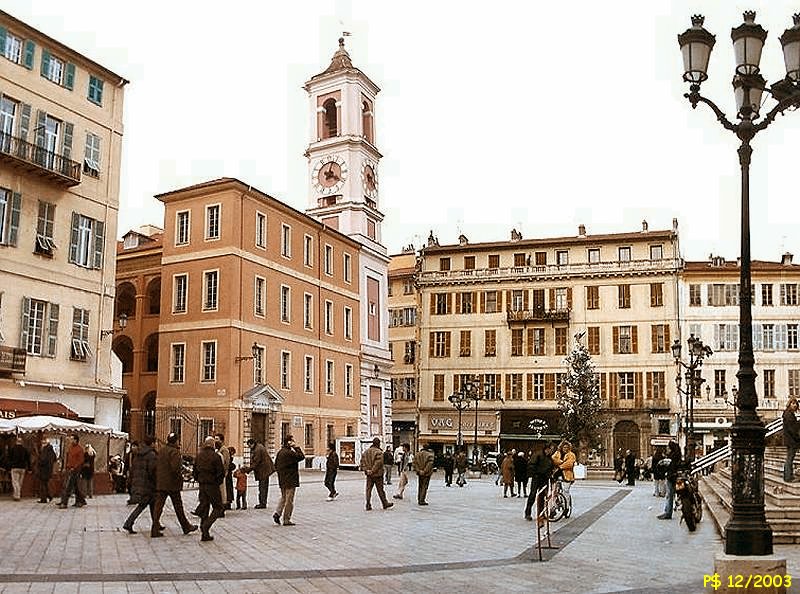
See? A beautiful place for people walking. No cars. Not many bikes, either. You don’t need bikes in a place like this.
Even today, hundreds of millions of people are living in places like this, where they don’t own or need a car. They usually don’t own or need a bicycle either. Mostly, they get around by walking, and by taking the local train or sometimes the bus.

Pollensa
Mallorca, Spain.
Of course, you can still have motorized vehicles. However, they are mostly commercial vehicles, for carrying cargo. There are a few buses and taxis. But, the typical person doesn’t own or need a car. And, the places they live are mostly carfree. Places for people.
October 10, 2009: Place and Non-Place
There are even some places in the world in which cars are banned completely. One such place is Venice, Italy. It is considered one of the most beautiful, romantic and appealing cities in the world. You might note that Venice has also banned all bicycles! When you get rid of the cars — and the bicycles! — a city can become a beautiful place.
August 1, 2010: The Problem With Bicycles
October 18, 2009: Let’s Take Another Trip to Venice
October 7, 2007: Let’s Take a Trip to Venice
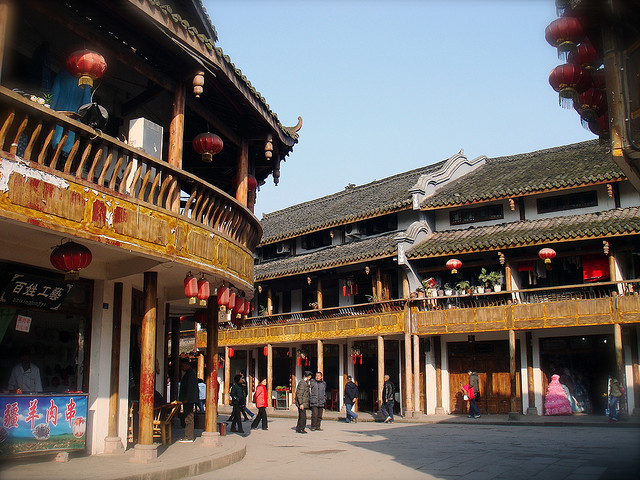
Chinese village.
Note that these are all urban places. When you get rid of the cars, you also get rid of the “suburbs,” a mixed-up combination of urban and rural. Rather, you want to have a very clear rural pattern of farming, and a very clear urban pattern. However, when I say “urban,” it can be a very small village in a rural area, or a giant metropolis. For example, this is a picture of a small town, Uzes, France, population 8,000, which is in a rural area:
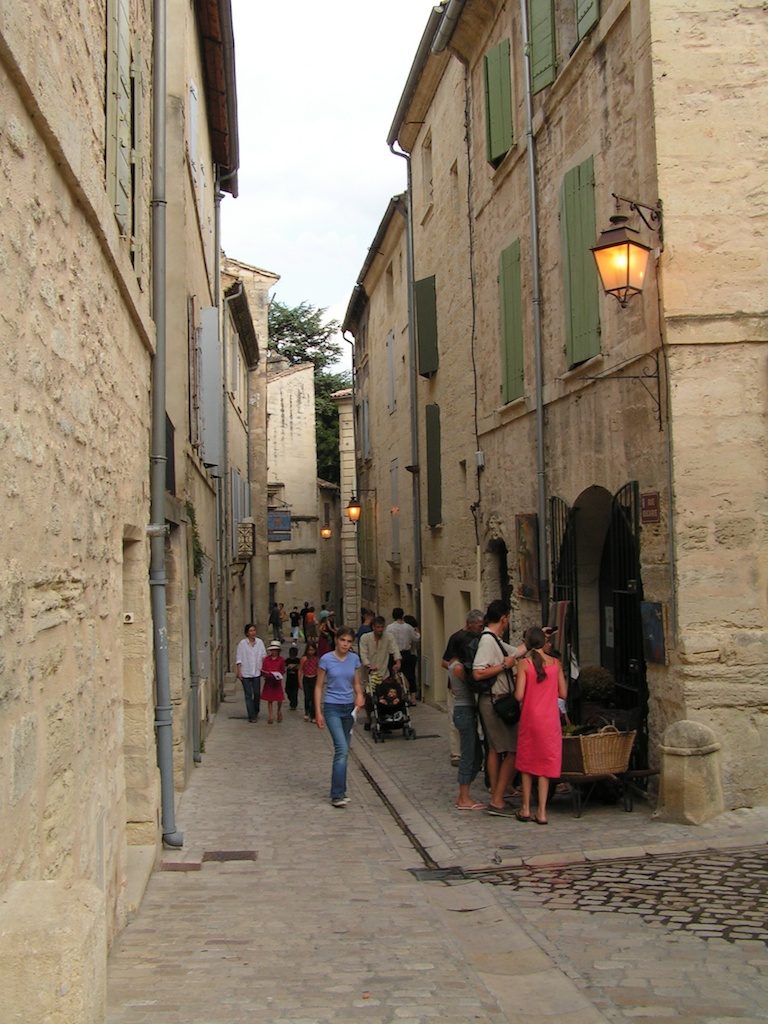
KONICA MINOLTA DIGITAL CAMERA
Doesn’t that look nice? See any cars?
Can you see how this is an environment where you don’t need a car?
To get from one town to another, you can take a train or bus.
Here is a picture of a much larger city, Tallin, Estonia, which has a population of 455,000.
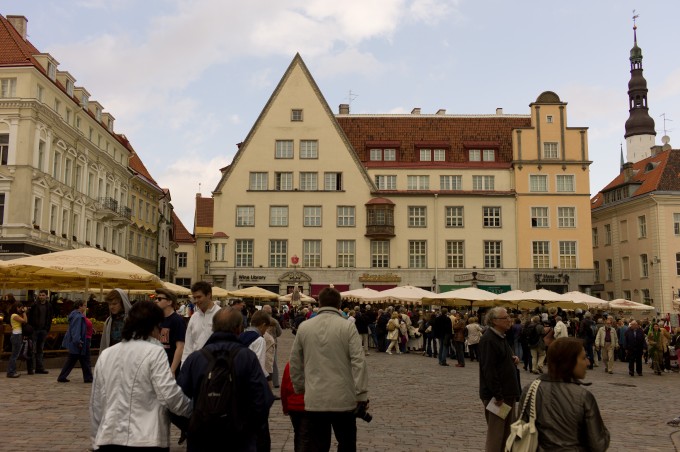
Looks about the same, right? The population is fifty times larger, but the basic pattern is the same. Unlike our experience in the U.S., where a larger city means “more traffic,” here we see that, despite getting fifty times larger, we still don’t have any need for cars. Maybe there is a train or bus system to get around town. But, mostly you just walk.
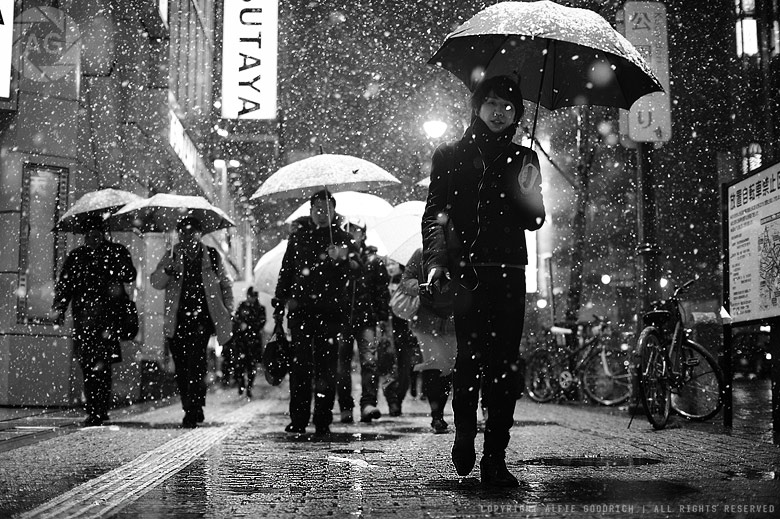
Here is a photo from a much larger city. This city has over 30 million people.
But still, we see no cars! This is the Shibuya district of Tokyo. Of course, there are cars in Tokyo, but there are also many, many places like this where there are no cars, just people walking. This is the center of the city. Most people in central Tokyo do not own a car — or a bike — they just use the excellent subway and train system.
December 27, 2009: What a Real Train System Looks Like

Here is a typical commercial street in the Shinamachi district of Tokyo. Once again, no cars.
So, it turns out that the secret to living without cars is to make an environment in which cars are not necessary. This is easy to do, and in fact we have thousands of years of experience in making places like this.
You just have to do it!
Even though these pictures are from both Asian and European examples, they have some things in common:
2) The buildings are built side-by-side, right up to the street, without a patch of grass or shrubbery in front or around the sides. There are gardens, parks and courtyards — useful places for people to enjoy — but no space wasted on “landscaping.”
3) The design is made, first and foremost, for people, not cars, although motor vehicles might be used for deliveries and so forth.
Let’s look at more examples:
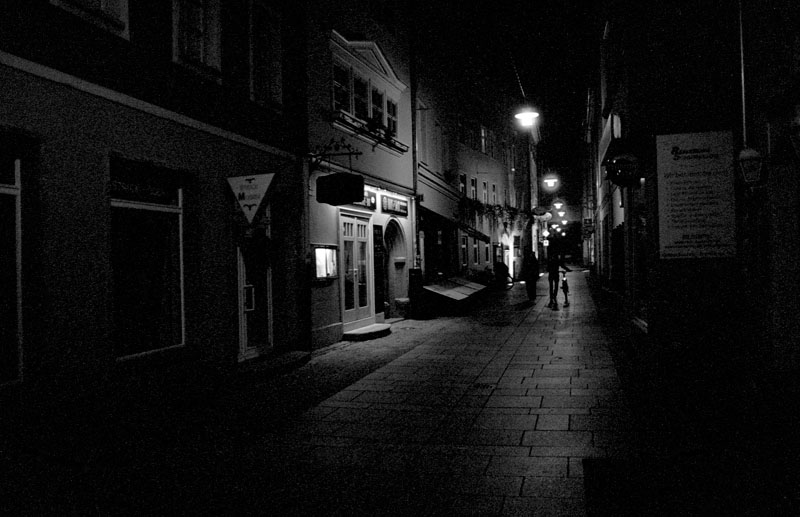
See how the street is only about fifteen feet wide?
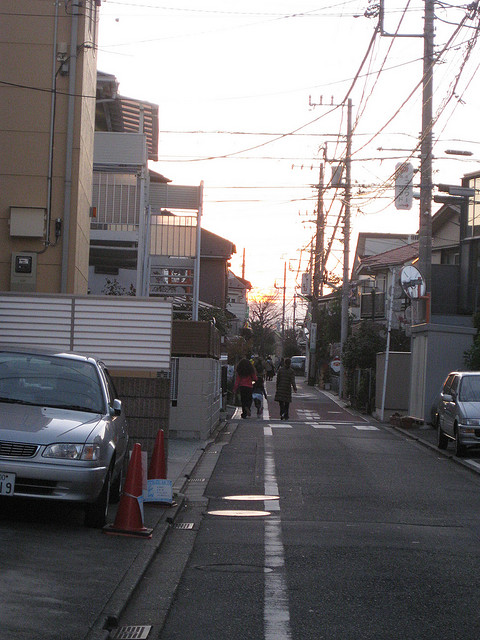
Typical Tokyo residential area. Look how quiet and pleasant it is. When you get rid of the automobile traffic, the city becomes very pleasant.
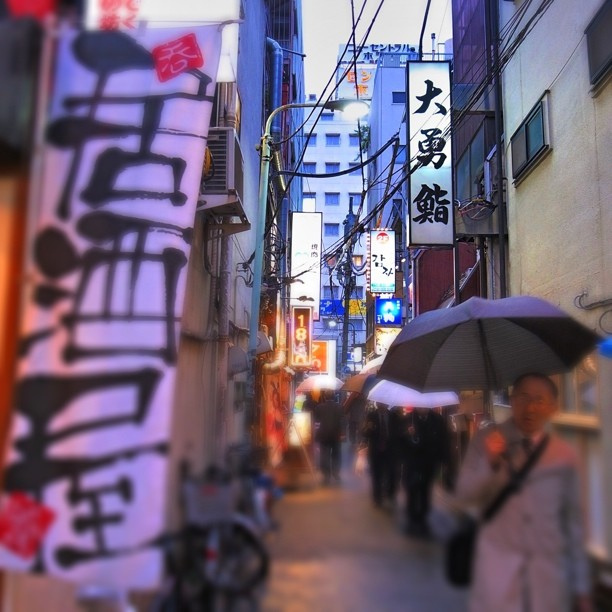
Kanda district, Tokyo.
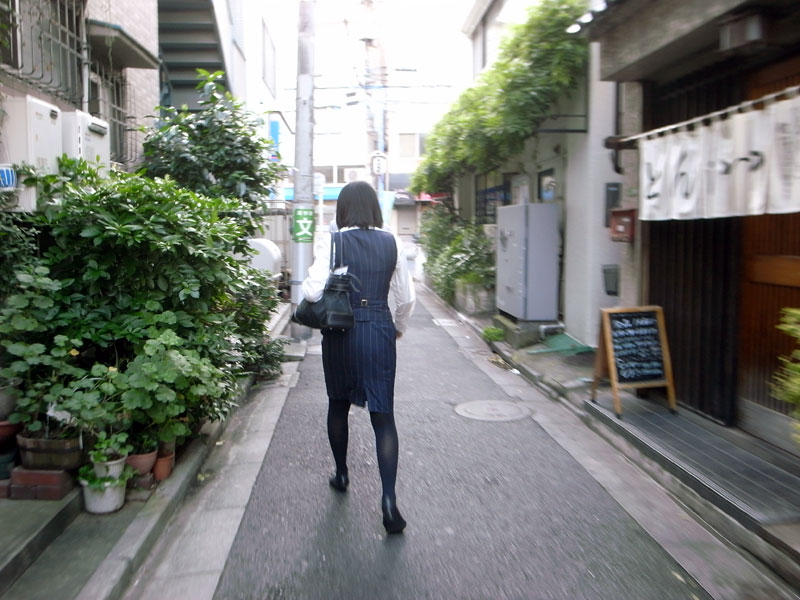
Kita-Senju district, Tokyo.
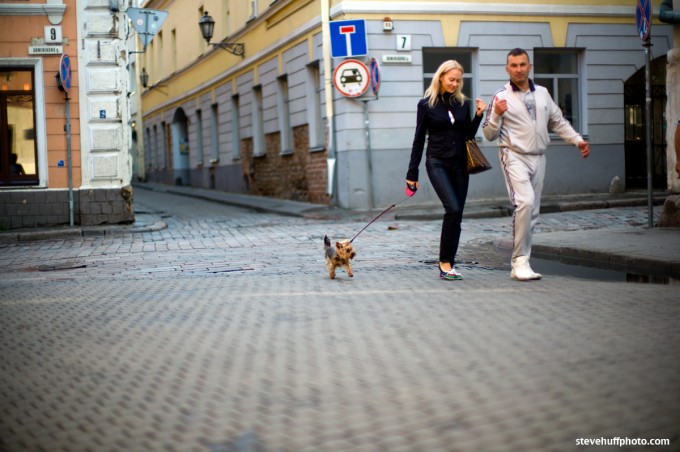
More from Tallin, Estonia. People, not cars.
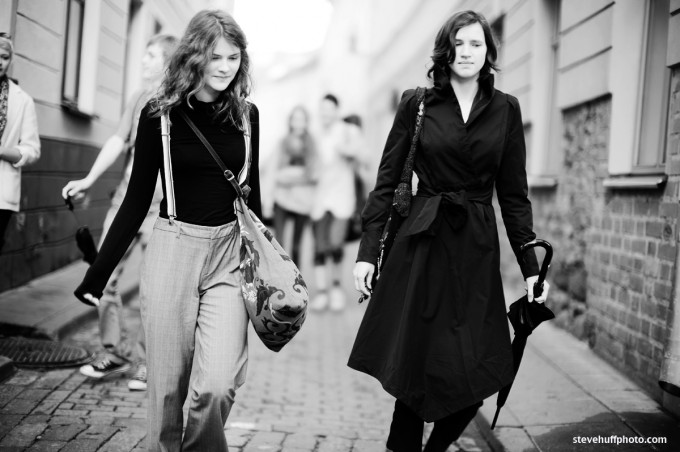

London. Giant city, but a beautiful street for people, not cars.
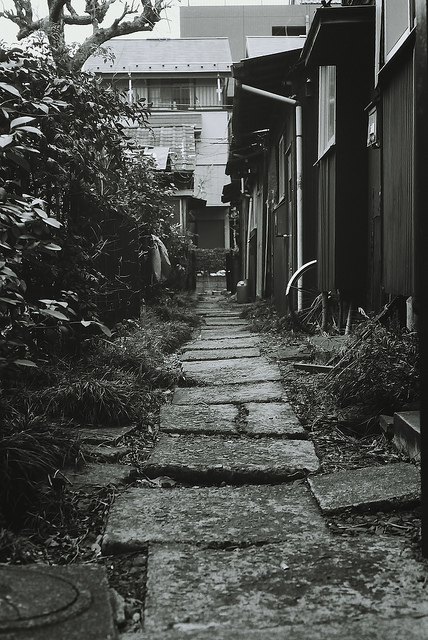
Nishi-Ikebukuro district, Tokyo. Quiet corner with some small houses. This is in the central city.
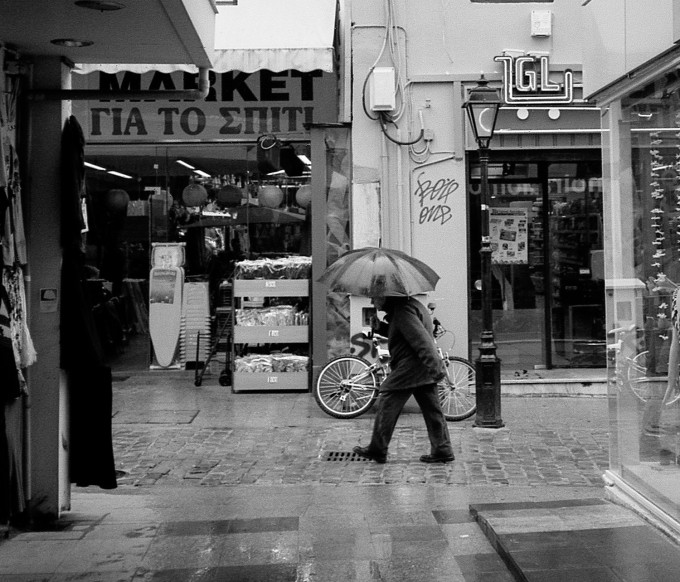
Greece.
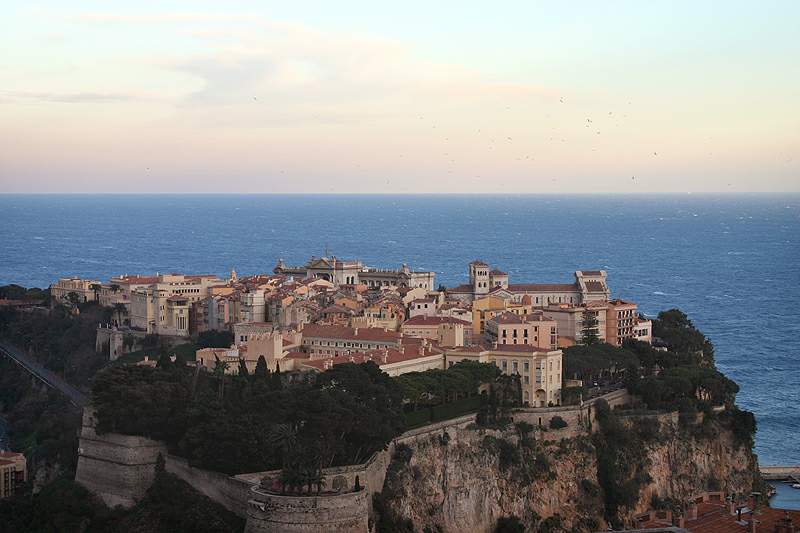
Palais de Monaco.
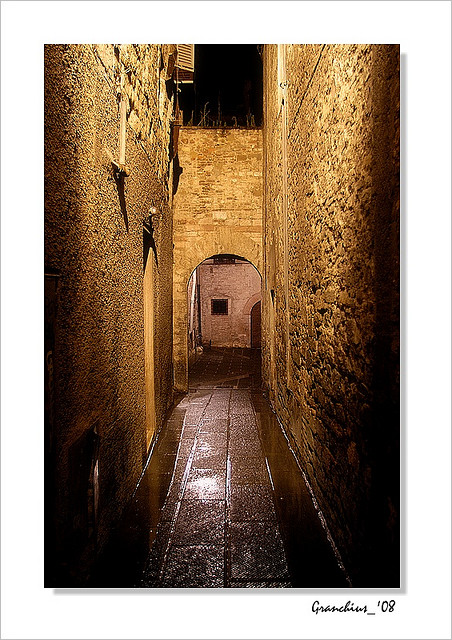
Sometimes, the streets get really, really narrow. Perugia, Italy.
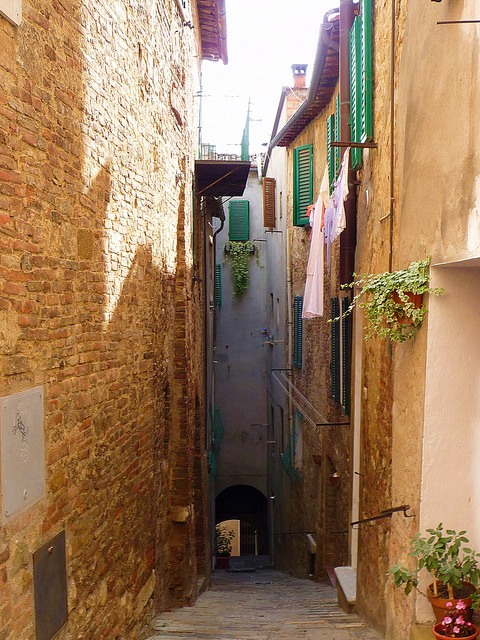
Pienza, Italy. Life Without Cars.
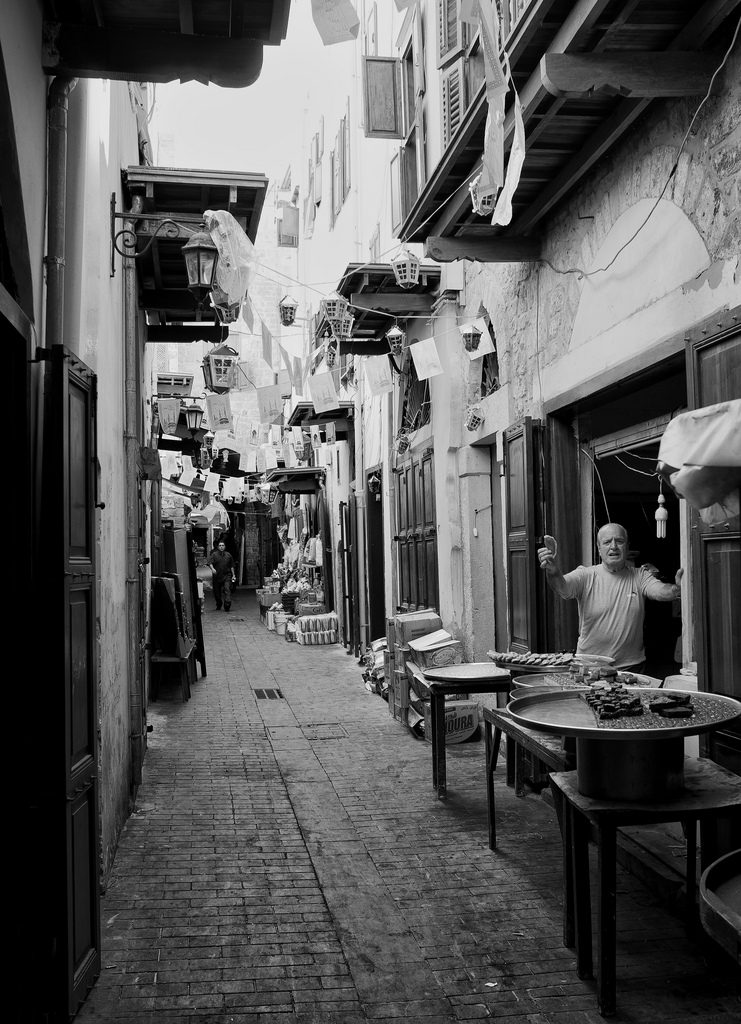
Saida, Lebanon. This fellow seems to be running a small restaurant or bakery. More fun than Applebee’s. Trust me on that.

No cars here either. And no bikes. You don’t need bikes.
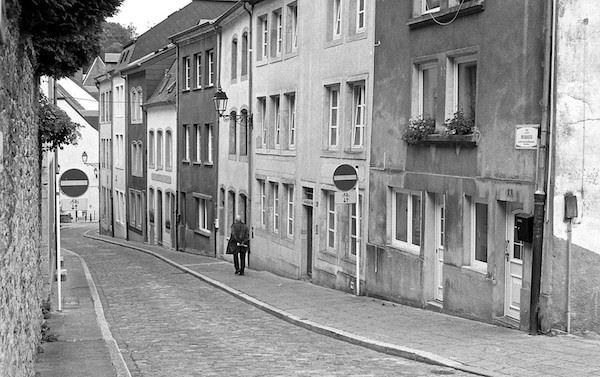
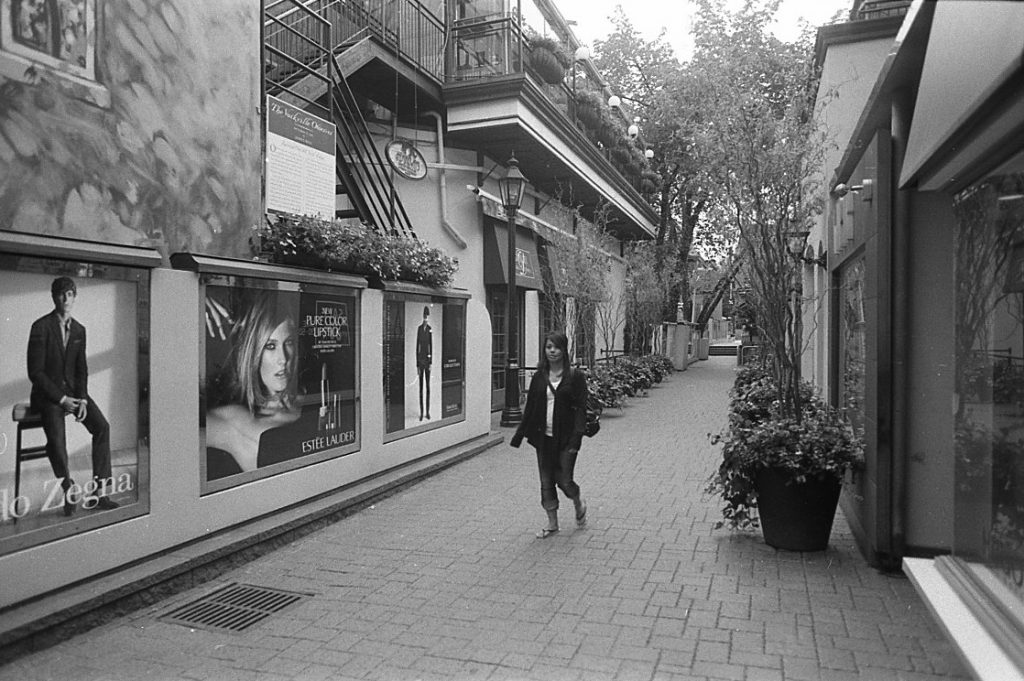
This is actually a shopping center in Toronto. But, we can see that the basic format is the same. You can use these patterns to make a shopping center if you like. The results, as you can see, are very appealing.
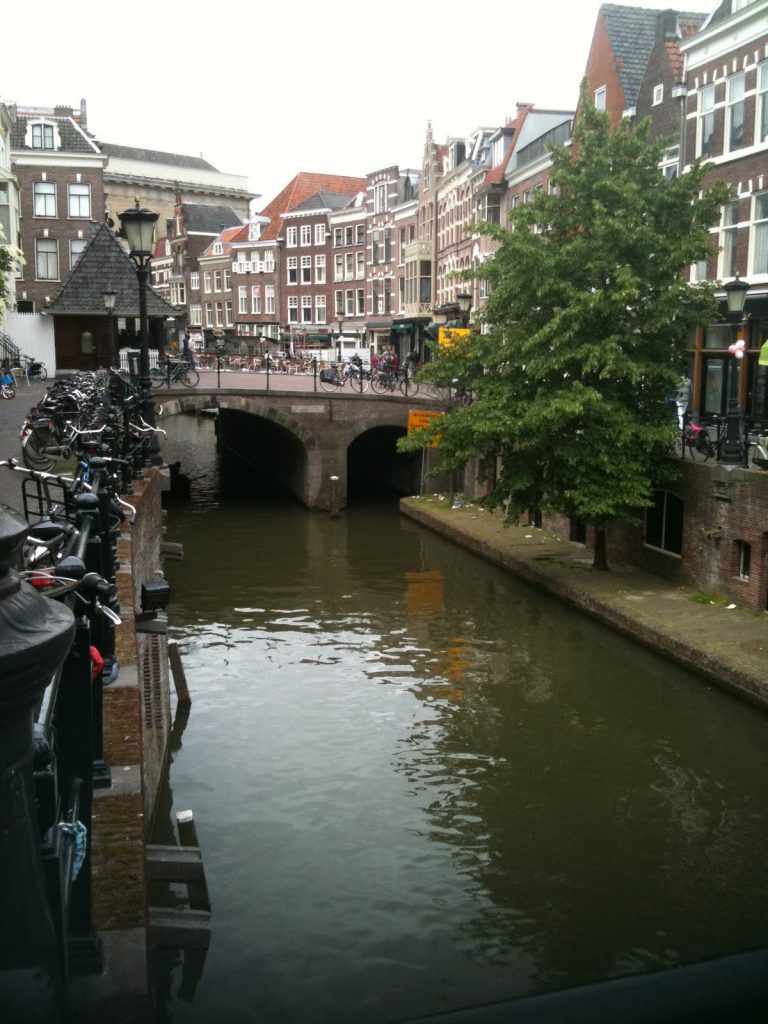
Utrecht, Netherlands.
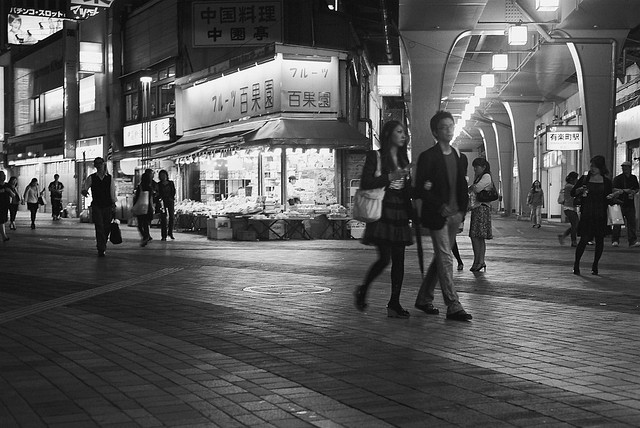
Yurakucho district, Tokyo. This is the center of the city. The bridge overhead carries a train line. You can see the entrance to the train station on the right. Another beautiful place to walk.
So you see, Life Without Cars is rather easy to achieve. And so worthwhile!
Do you really want to keep on doing what we have been doing so far?
Or, shall we have a Life Without Cars?
Another notion we have, in the U.S., is that Life Before Cars was very primitive and brutish. But that wasn’t the case at all. Indeed, you might conclude that Life Before Cars, in many cases, was very refined and beautiful, and that things have become a lot more primitive and brutish since the Automobile Age began.
Previously, I’ve used the paintings of James Tissot to illustrate the beauty of upper-class European life before World War I and the automobile. It worked, so let’s continue with it.

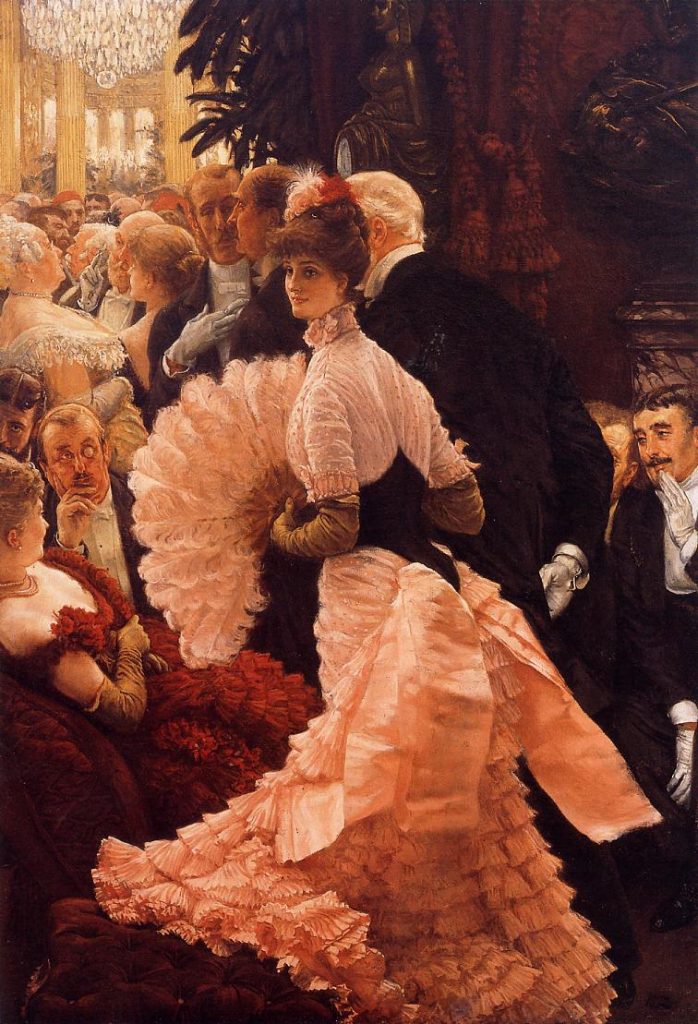
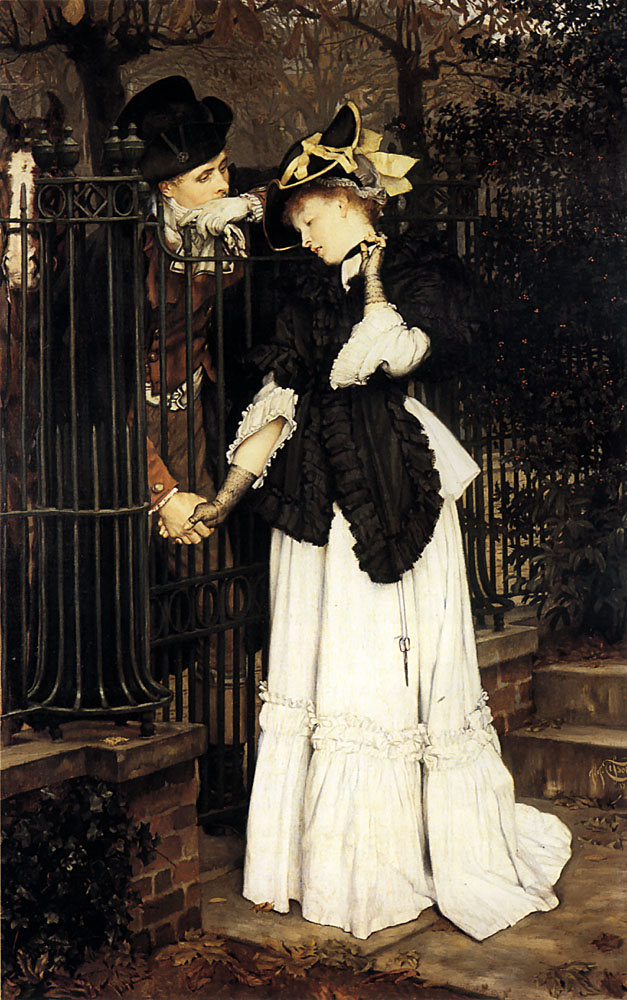


Life Without Cars can be a lot of fun.
Other commentary in this series:
November 6, 2011: Let’s Take a Traditional City Break 5: Stuff That Works
October 30, 2011: The Diminishing Returns of Heroic Materialism
September 25, 2011: Let’s Take a Traditional City Break 4: Many Variations, One Theme
August 21, 2011: How To Make A Pile of Dough With the Traditional City 6: Better Than a Thousand Words
July 31, 2011: How To Make a Pile of Dough With the Traditional City 5: The New New Suburbanism
July 17, 2011: How To Make A Pile of Dough With the Traditional City 4: More SFDR/SFAR Solutions
July 3, 2011: The New World Economics Guide to Men’s Fashion
June 12, 2011: How to Make a Pile of Dough with the Traditional City 3: Single Family Detached in the Traditional City Style
May 15, 2011: A Ski Resort Village
May 1, 2011: Let’s Take a Traditional City Break 3: Life With Really Narrow Streets
April 3, 2011: Let’s Take a Trip to the Skinniest House in New York
March 20, 2011: Let’s Take a Trip to Julianne Moore’s House
February 13, 2011: Let’s Take a Traditional City Break 2: More Really Narrow Streets Than You Can Shake a Stick At
February 6, 2011: Let’s Take a Traditional City Break
December 19, 2010: Life Without Cars: 2010 Edition
October 17, 2010: The Problem of Scarcity 3: Resource Scarcity
August 22, 2010: How to Make a Pile of Dough with the Traditional City
August 1, 2010: The Problem With Bicycles
June 6, 2010: Transitioning to the Traditional City 2: Pooh-poohing the Naysayers
May 23, 2010: Transitioning to the Traditional City
May 16, 2010: The Service Economy
April 18, 2010: How to Live the Good Life in the Traditional City
April 4, 2010: The Problem With Little Teeny Farms 2: How Many Acres Can Sustain a Family?
March 28, 2010: The Problem With Little Teeny Farms
March 14, 2010: The Traditional City: Bringing It All Together
March 7, 2010: Let’s Take a Trip to Suburban Hell
February 21, 2010: Toledo, Spain or Toledo, Ohio?
January 31, 2010: Let’s Take a Trip to New York 2: The Bad and the Ugly
January 24, 2010: Let’s Take a Trip to New York City
January 10, 2010: We Could All Be Wizards
December 27, 2009: What a Real Train System Looks Like
December 13, 2009: Life Without Cars: 2009 Edition
November 22, 2009: What Comes After Heroic Materialism?
November 15, 2009: Let’s Kick Around Carfree.com
November 8, 2009: The Future Stinks
October 18, 2009: Let’s Take Another Trip to Venice
October 10, 2009: Place and Non-Place
September 28, 2009: Let’s Take a Trip to Barcelona
September 20, 2009: The Problem of Scarcity 2: It’s All In Your Head
September 13, 2009: The Problem of Scarcity
July 26, 2009: Let’s Take a Trip to an American Village 3: How the Suburbs Came to Be
July 19, 2009: Let’s Take a Trip to an American Village 2: Downtown
July 12, 2009: Let’s Take a Trip to an American Village
May 3, 2009: A Bazillion Windmills
April 19, 2009: Let’s Kick Around the “Sustainability” Types
March 3, 2009: Let’s Visit Some More Villages
February 15, 2009: Let’s Take a Trip to the French Village
February 1, 2009: Let’s Take a Trip to the English Village
January 25, 2009: How to Buy Gold on the Comex (scroll down)
January 4, 2009: Currency Management for Little Countries (scroll down)
December 28, 2008: Currencies are Causes, not Effects (scroll down)
December 21, 2008: Life Without Cars
August 10, 2008: Visions of Future Cities
July 20, 2008: The Traditional City vs. the “Radiant City”
December 2, 2007: Let’s Take a Trip to Tokyo
October 7, 2007: Let’s Take a Trip to Venice
June 17, 2007: Recipe for Florence
July 9, 2007: No Growth Economics
March 26, 2006: The Eco-Metropolis

